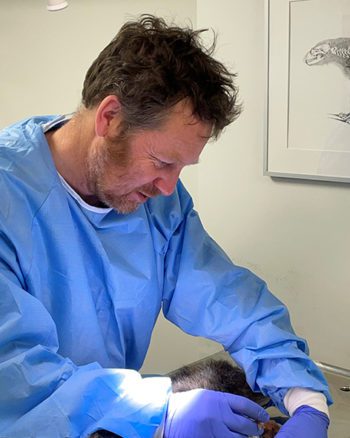6 Feb 2024
Ross Allan reviews the key information set out at the latest London course.

Intra-articular treatment of OA brought together delegates for a day of CPD, hosted by Veterinary Osteoarthritis Alliance (VOA).
The day course, led by vet and the author of this article, Ross Allan, was held at Central CPD in London, and provided a perfect opportunity for delegates to learn about intra-articulars, the latest research and provide an overview of products available in the marketplace.
It was also a great opportunity for delegates to learn about the anatomical landmarks and technique to optimise joint fluid collection and intra-articular administration – a skill that everyone in general practice should have.
 Feedback from the day included “an excellent day, useful mix of theory and guidance; lovely to spend the day with all the delegates working in pain management”, and “fabulous day, interesting informative and very practical”.
Feedback from the day included “an excellent day, useful mix of theory and guidance; lovely to spend the day with all the delegates working in pain management”, and “fabulous day, interesting informative and very practical”.
OA is the most common degenerative joint disorder characterised by cartilage degradation, sub-chondral bone sclerosis, the formation of osteophytes and synovial inflammation. The fundamental understanding of OA and how it progresses has developed over the past 10 years. A compelling argument now exists as to why synovial joints must be viewed as organs, with “cartilage, synovium and bone working in concert”, a group of tissues working to carry out shared function.
The tissues interact via soluble mediators secreted into the synovial fluid; therefore, the disease affects the whole joint, despite the traditional view that OA is a cartilage-only disorder.
It is this important message and these soluble mediators that underpin why interest is increasing in orthobiologics and its scope to influence synovial inflammation. It is also a compelling reason for why all of us who treat osteoarthritic patients should increase our insight into their claims, research and use.
Each OA patient requires a multimodal management plan that, for most patients, focuses initially on weight management, exercise modification and owner education. While these elements are vital for all patients, the ability to effectively sample joint fluid, and assess and administer intra-articulars effectively, is also important.
The VOA intra-articular CPD promised to give delegates “skills you can use tomorrow”, and its success demonstrated why vets in general practice can benefit from learning more about this developing area.